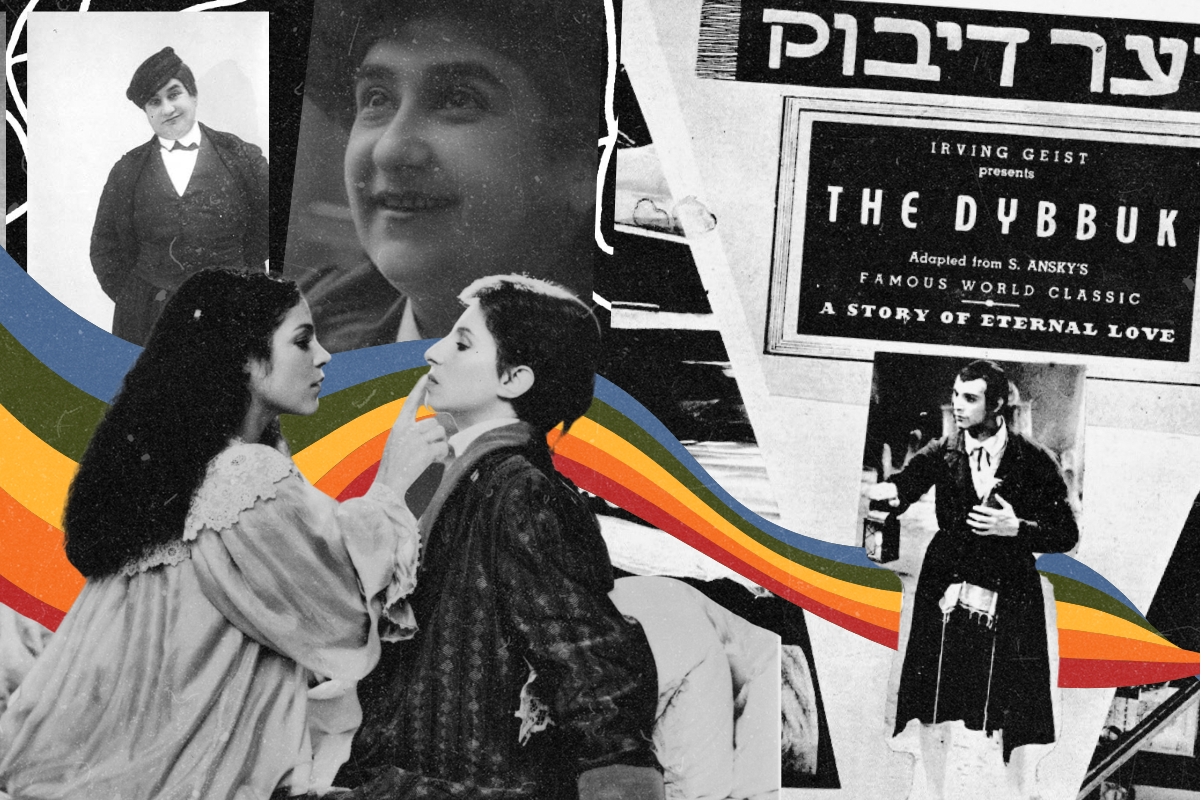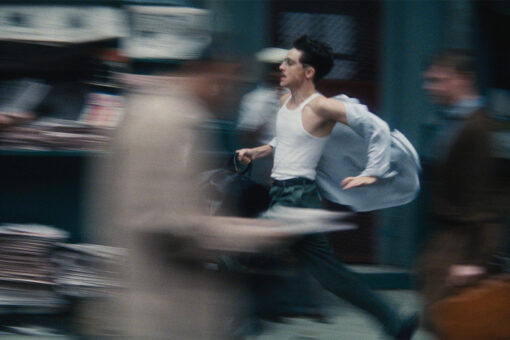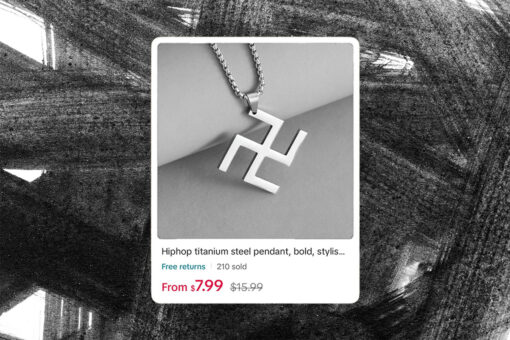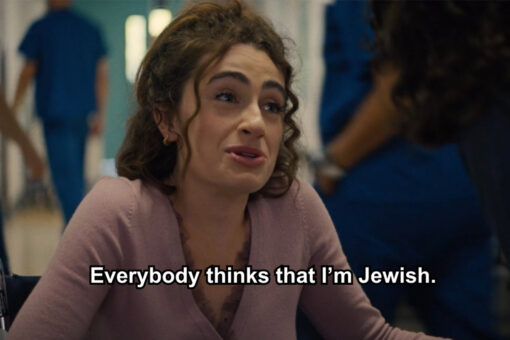Queer culture has a surprisingly long history with Yiddish. Polari, the secret gay language of 1900’s Britain, which is where we get words like “butch” and “camp” from, owes much of its vocabulary to Yiddish. Words like nishta (nothing), schmutter (garment) and meshigener (crazy) are recognisably Yiddish, but less obvious words like luppers (fingers) from the Yiddish ‘lapa’ (paw), and meese (ugly) from ‘mieskeit’ (same not very kind meaning!) exist too. Polari was used by LGBTQ people to communicate privately in public. It also functioned as a secret code; if someone came up to you speaking Polari, you knew they were gay, and thus safe. When England and Wales decriminalized homosexuality in the 60’s, there was little use for Polari left and it fell out of use, but not without leaving us a lot of great slang. Polari’s borrowing of Yiddish is probably due to high levels of interaction between queer people and Jews in late 19th-century Britain. Both groups lived and worked on the outskirts of society, often in places like theaters and circuses.
The overlap of queer slang and Yiddish isn’t just historic. According to a survey on Jewish language and identity, non-Jewish LGBTQ Americans are more likely to use Yiddish words than their straight cis counterparts. It’s believed this has something to do with a perceived theatricality of Yiddish, and the use of Yiddish by gay icons like Joan Rivers. Some people may take issue with this, but it kind of makes sense given the way Jews often pepper Yiddish into a conversation for some added flair. Personally, I’m fine with the LGBTQ community kvelling over Yiddish, as long as it’s being used to tell the joke, not the butt of it. There’s a line between appropriation and appreciation. Interestingly though, this trend doesn’t include LGBTQ Jews. Maybe we’ve already reached peak Yiddish saturation?
LGBTQ people using more Yiddish tracks with what David Shneer z”l began noticing in the 90’s, something he called the ‘bizarre phenomenon’ of queer people (especially non-Jewish queer people) being overrepresented in Yiddish spaces. He thought this probably stemmed from the framing of Yiddish as alternative and leftist, though he didn’t believe those values were inherent to Yiddish.
On the other side of the coin, Yiddish has long interacted with queerness. So much so that Professor Jeffrey Shandler invented the term “Queer Yiddishkeit.” Technically the term refers to the post-Holocaust intersection of the two, but there are many more pre-war queer Yiddish cultural touchpoints than you might expect. Yiddish literature and art was no stranger to playing with gender, from I. Bashevis Singer’s “Yentl the Yeshiva Boy” — eventually bringing us the hot guy sensation that was young Mandy Patinkin — to S. Ansky’s translated play “The Dybbuk” in which a man possesses the body of a woman he loved. But the gender fluidity doesn’t stop there. Outside fiction, real people like Yiddish Drag King Pepi Litman were famous, and according to Shandler, even Yiddish stars like Boris Thomashefsky celebrated their early roles in drag. Cross-dressing was common and expected in Yiddish productions, not necessarily associated with homosexuality. But that’s not to say that Yiddish culture didn’t deal with homosexuality — Sholem Asch’s 1907 Yiddish play “Der got fun nekome” (“God of Vengeance”) famously features a lesbian love scene, a scene which got the 1923 Broadway production put on trial for obscenity charges and its cast thrown in jail. It’s also credited as the first Broadway lesbian kiss.
Nowadays, Queer Yiddishkeit is almost everywhere in secular Yiddish spaces. With the Klezmer revival came The Klezmatics, whose first album in 1988 was “Shvaygn=Toyt,” a translation of the Silence=Death slogan of AIDS activists. Since then, many more queer bands have emerged, including Gay Iz Mir, The Klezbians and the incredibly named Isle of Klezbos. While secular Yiddish spaces are generally welcoming — if you’ve ever taken a Yiddish class you’ll have probably learned LGBTQ-related vocab — there are now also many LGBTQ-specific Yiddish spaces. Recently, QueerYiddishCamp was born, an online Yiddish intensive focusing on marginalized identities. There’s a Facebook group called Queer Yiddishkayt with more than 1,000 members, too. And following in the footsteps of Yiddish theater bygone, Mitzi Manna, drag queen alter-ego of Shane Baker, bills herself as “High Yiddish Art in Low Drag” and claims to be the only Yiddish drag queen in the world (but frankly, that seems unlikely).
There is of course a tension in a language that is almost entirely spoken by Ultra-Orthodox Jews being claimed as a language of Queerness. Let’s be honest though, there’s always been a tension between the native speakers of Ultra-Orthodox Yiddish and secular, acquired Yiddish. To recognize the modern secular role of Yiddish is not to diminish its role in the daily lives of millions of Ultra-Orthodox Jews — but they’re not the only ones with a stake in the future of Yiddish. The Yiddishists who have made it their life’s work — like lesbian poet and writer Irena Klepfisz — own it too. If queer people, Jewish or not, can contribute to future Yiddish culture and study, why would we stop them?
To The Klezmatics co-founder Alicia Svigals, the (gay) marriage of queerness and Yiddishism makes a lot of sense: “Yiddish itself has been relegated over time to the marginalia of an already marginal population, so queerness and Yiddishism by now seem a natural shidekh,” she wrote in an article for In geveb. Both queerness and Jewishness are lenses through which to view the majority culture. For queer Jews, the combination is inevitable, and for queer non-Jews, the recognition of Yiddish as a language of the outsider, of the downtrodden, (of the witty) makes sense too. As the late great Susan Sontag wrote in her seminal 1964 essay “Notes on Camp”: “Jews and Homosexuals are the outstanding creative minorities in contemporary urban culture.” Queer culture and Yiddish culture have always interacted with each other, and I think they always will.



